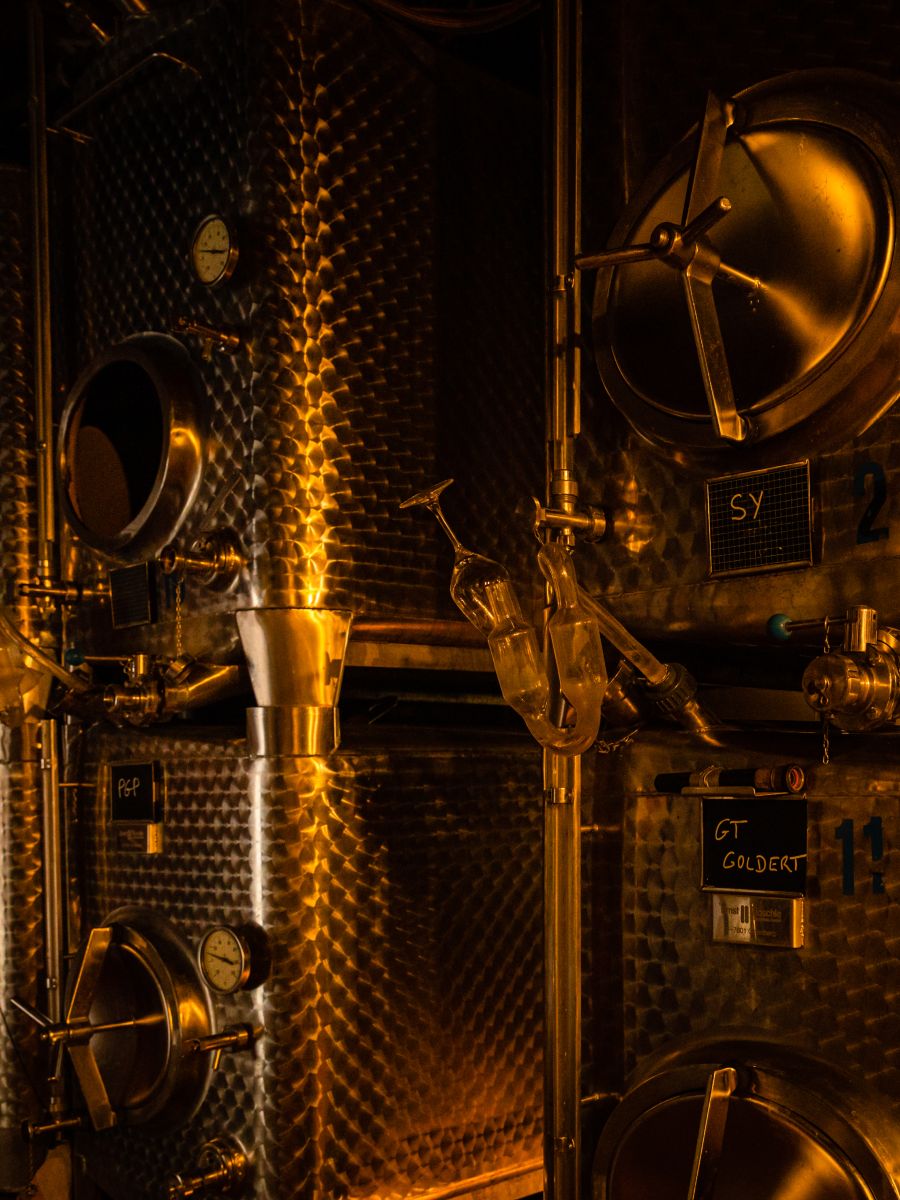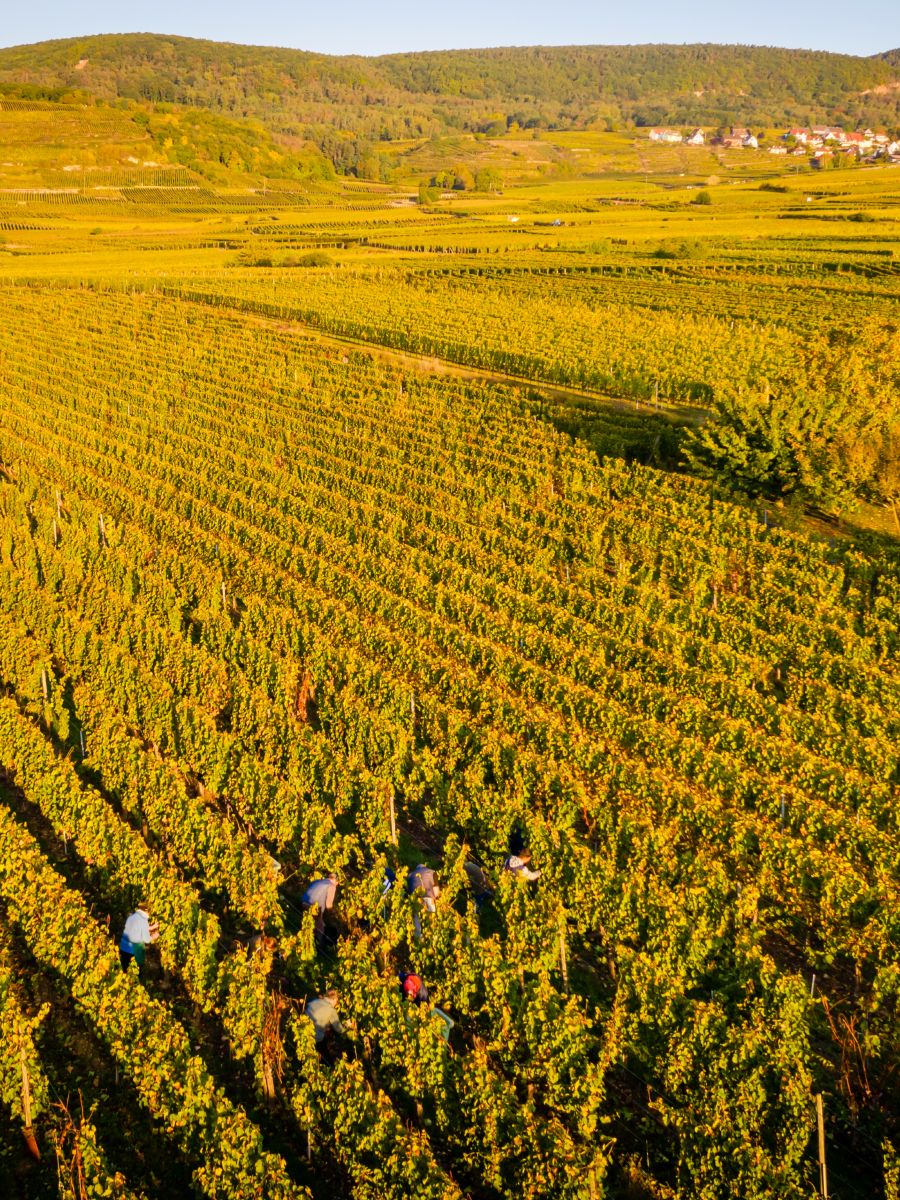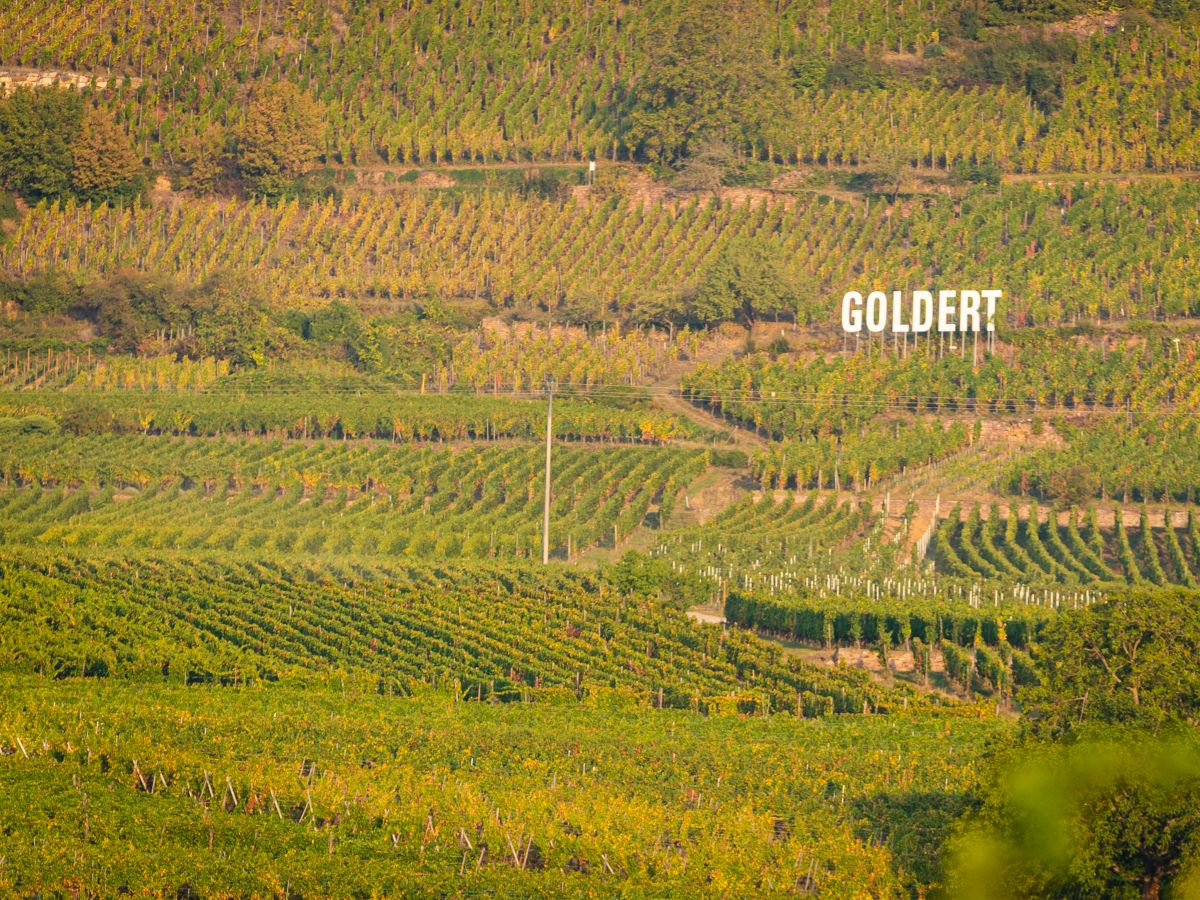Vineyard and cellar work
In the vineyard
Without converting to organic production, Matthieu is very interested in it. He practices dose reduction to apply a minimum of treatment products in the vineyard.
His experiments even led him to use homeopathy, a technique that is unfortunately prohibited in France.
In 2010 he decided to work exclusively with organic products and abandoned insecticides.
In 2014 the total abandonment of insecticides is the subject of a village project which is a great moment for Gueberschwihr and for us too.
Our vines are worked in an artisanal way, we favour manual work to limit the passage of machines that damage and compact the soil.
The rows are 1.70m apart, one row out of two is grassed and mowed, the other is ploughed and worked by sowing green manure from time to time to stimulate life in the soil and bring nutrients to the vine.
The harvest, which is always done by hand, allows us to select the bunches of grapes in the best possible way and to obtain the best quality, while respecting the soil and avoiding subsidence.
The bunches are transported in bins of about 50kg, to respect the integrity of the grapes. However, some grapes are transported in skips, to practice a small maceration and extract certain aromas linked to the character of the grape variety.
In 2021, the decision was made to move to organic production.




